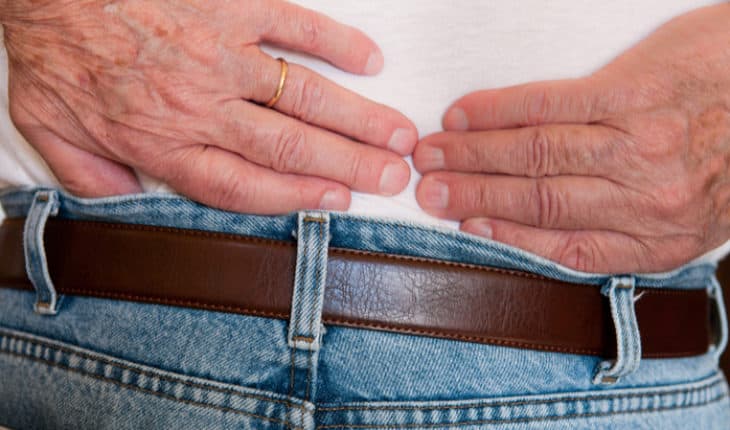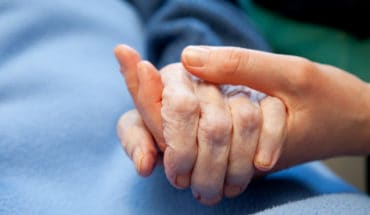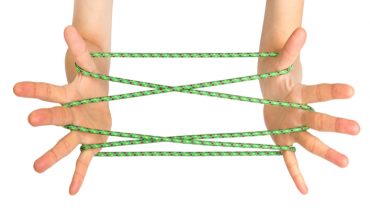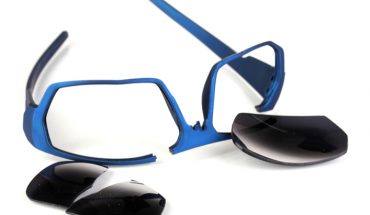A herniated or ‘slipped’ disc is one of the most painful kinds of back pain, which can cause long-term immobility if not treated correctly.
The term slipped disc refers to a condition where the centre of a spinal disc bulges outwards and presses on a nerve. The spinal discs act as shock absorbers and through a variety of causes, the walls of the disc can become weaker. If the centre of the disc pushes out, this can cause the disc wall to bulge and that can be when pain strikes.
Here are six steps of management that should be considered in this situation:
Painkillers
The first thing the NHS recommends is to take some anti-inflammatories such as ibuprofen. Relieving pain is the first step to being able to move, because if you can move, the mechanisms which keep our backs healthy can operate.
In approximately 90% of cases, back pain resolves within six weeks. But if the pain isn’t going away or severe, then some form of manual therapy’s advisable.
Manual Therapy
Generally speaking, manual therapists will seek to ease muscle spasm and then, through either some manual mobilisation or manipulation, free the joints which may be stuck They will also look at how our bodies are moving.
Often some gentle stretches and exercises can help to get movement back, all with the goal to help the body heal itself.
Injections
These are controversial. When a patient has a slipped disc and pain, there can be inflammation in the area. This inflammation can cause pain on its own.
A steroid injection with or without some local anaesthetic may be given to reduce inflammation and provide temporary relief with the goal to create a window of pain relief where the body can move or where therapists can work with a patient.
The controversy about the effectiveness of injections is because injections do not address the causes of the problem.
IDD Therapy
This is the next step when manual therapy and exercise alone aren’t enough. IDD Therapy is a computer-controlled treatment which helps physiotherapists to decompress the specific spinal segment where the disc is “slipped” or herniated. Patients lie on a treatment couch where they are connected to a machine with a pelvic harness and a chest harness.
The IDD Therapy machine then applies a gentle pulling force at a precise angle to take pressure off the targeted disc and to gently mobilise the joint and surrounding muscles. The goal with IDD Therapy is to relieve muscle spasm, reduce or reverse disc bulging and gently stretch the tissues to free the movement in the spine.
Spinal surgery
Surgery can be a very important step for patients with a slipped disc which has not responded to any of the treatments described. This is particularly the case if the disc is putting pressure on nerves to such an extent that it causes weakness in the legs or arms, or in very severe cases, if a slipped disc puts pressure on the spinal cord and affects our bowel or bladder control, then emergency surgery can be essential.
Surgery can remove the pain immediately. However, it’s not without risks and surgery doesn’t address the causes which led to the weakness in the first place.
Other treatments
Yoga and Pilates can be helpful in maintaining your body once you resolve the pain. It is important to find a teacher who suits you and understands your condition.
Acupuncture can relieve muscle spasm and back pain, though for a slipped disc it would work best in conjunction with manual therapy and IDD Therapy rather than as a stand-alone treatment.
What’s next?
There’s a general move in healthcare away from invasive treatments such as injections and surgery, and the emergence of treatments like IDD Therapy, which has replaced traction, means that, combined with increased knowledge about the spine and exercise, we can keep more people on the non-invasive side of spine care.
- Managing slipped discs - 17th December 2018








….Painkillers The first thing the NHS recommends is to take some anti-inflammatories such as ibuprofen……. Please write whether pregabalin, gabapentin or nortriptyline and opioid tramadol should be taken if NSAIDS do not work well and in what doses. Opioids addiction, along with that due to the first three medicines I have mentioned can also occur. I am of the opinion that steroidal injections you have mentioned should only be given when surgery becomes difficult or risky and these should not be given to youngsters but only to aged ones. Further, the first injection may prove very saddening to the patients… Read more »